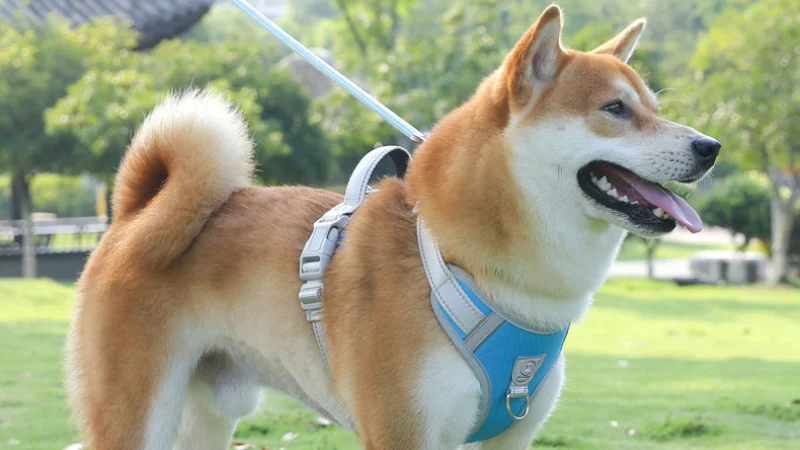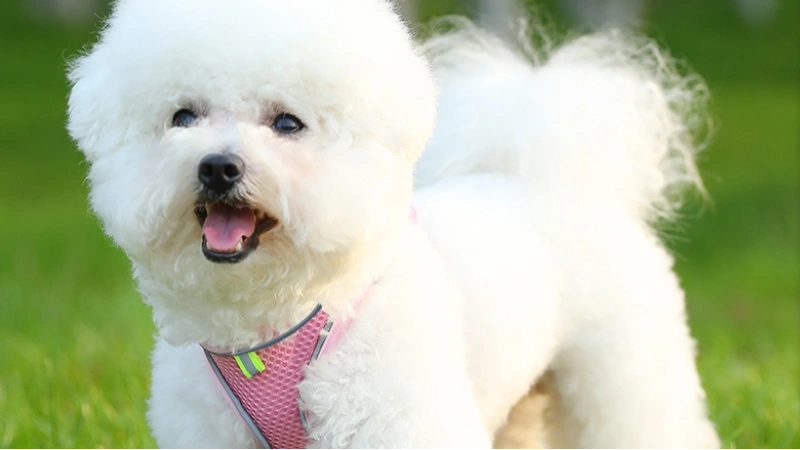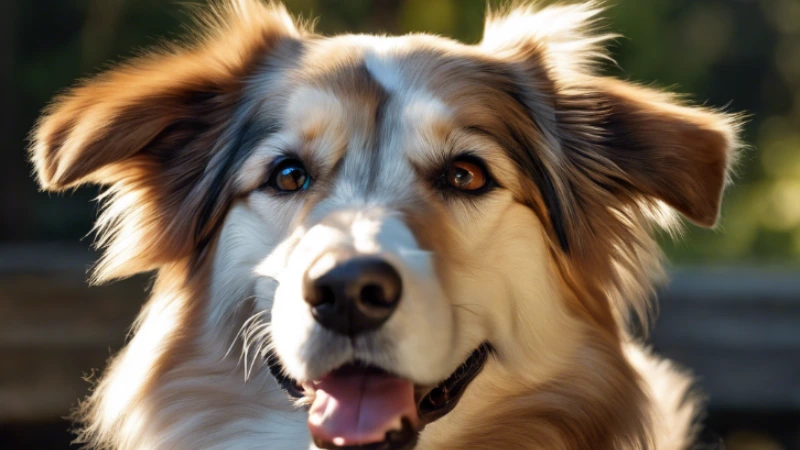Puppies are bundles of joy, bringing energy and excitement into our lives. However, they can also be a handful! One essential item that can make life easier for both you and your puppy is a good-quality harness. Many new pet owners wonder when they should start using a harness on their furry friends. This blog will explore expert insights on the best age to introduce a harness, its benefits, and tips for making the transition smooth.
The Right Age to Start Wearing a Harness
Experts generally recommend starting harness training as soon as your puppy joins your family, typically around 8 weeks old. At this age, puppies are beginning to explore their environment, and introducing them to a harness early helps them become accustomed to wearing one during walks, playtime, and vet visits.
Starting early ensures that your puppy associates the harness with positive experiences rather than fear or discomfort. According to the American Kennel Club (AKC), early socialization and training are crucial for developing well-adjusted adult dogs. Introducing a harness at this stage is an excellent way to begin that process.
Why 8 Weeks?
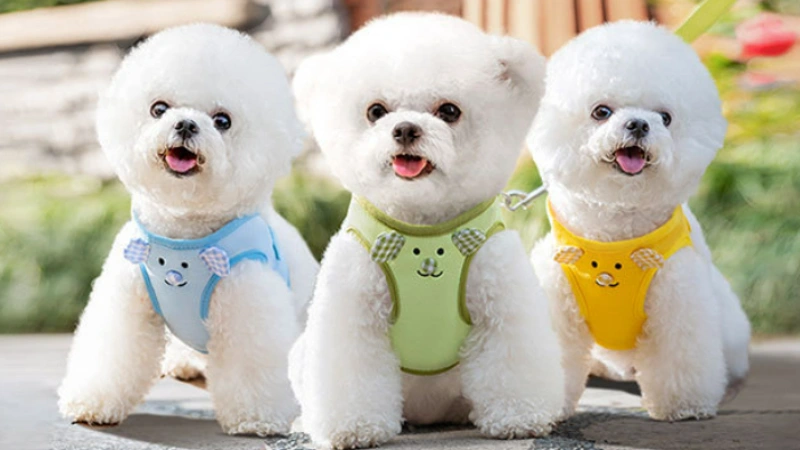
At around 8 weeks, puppies are usually ready for their first vaccinations and can start going outside in controlled environments. This is also the time when they begin to learn about their surroundings and how to interact with them. Introducing a harness during this critical developmental period can help facilitate positive experiences outside, making walks enjoyable from the start.
Benefits of Using a Harness for Puppies
Safety and Comfort
One of the primary advantages of using a harness is that it reduces strain on a dog’s neck. Traditional collars can apply pressure directly to the neck, which can be harmful, especially for small breeds or those with pre-existing health conditions like tracheal collapse.
Research indicates that dogs wearing collars may experience musculoskeletal injuries due to excess pressure on their necks. A study published in the Journal of Veterinary Behavior found that dogs tend to pull more strongly when restrained by collars compared to harnesses. This suggests that harnesses can alleviate some of this strain by distributing pressure more evenly across the dog’s chest and back.
Harnesses are particularly beneficial for brachycephalic breeds (like Bulldogs or Pugs) that already have compromised airways. By using a harness instead of a collar, you can significantly improve your puppy’s comfort during walks while minimizing the risk of choking or injury associated with pulling.
Better Control
Harnesses also provide better control over your puppy compared to collars. For larger or more energetic breeds, having control during walks is essential for both safety and training. A well-fitted harness allows you to guide your puppy more effectively without risking injury to yourself or your pet.
A study involving 66 domestic dogs assessed how different harness designs impacted canine locomotion. It was found that certain designs could influence how dogs moved while wearing them, highlighting the importance of selecting a well-designed harness that allows for natural movement while providing control.
Many harnesses come equipped with safety features such as reflective materials for visibility during nighttime walks or locking buckles that prevent accidental escape. This added security can be crucial for puppies that tend to bolt or those who may be easily distracted by their surroundings.
Training Tool
A harness can also serve as an effective training tool for puppies learning how to walk on a leash. Teaching leash manners is an essential part of puppy training, and using a harness can help facilitate this process.
Harnesses can discourage pulling behavior by redirecting your puppy’s attention back toward you when they attempt to pull forward. Front-clip harnesses are particularly effective in this regard, as they allow you to guide your puppy back toward you without applying pressure on their neck.
By starting leash training with a harness at an early age, you set the foundation for good walking habits as your puppy grows older. This makes walks more enjoyable for both you and your dog.
How to Introduce a Harness to Your Puppy
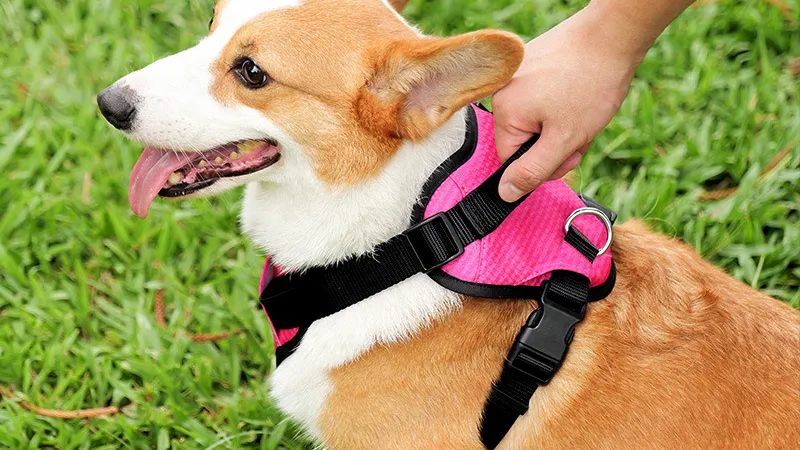
Introducing a harness should be done gradually and positively:
Desensitization Techniques
Start by allowing your puppy to sniff and explore the harness while rewarding them with treats. This helps create positive associations with the harness before it even goes on them.
- Familiarization: Place the harness near their sleeping area or play area so they can get used to its presence.
- Sniffing: Encourage them to sniff it and explore it at their own pace.
- Short Sessions: Once they seem comfortable, gently put it on them for short periods while offering praise and treats.
Positive Reinforcement
Using treats and praise effectively creates positive associations with wearing the harness:
- Reward Good Behavior: Whenever your puppy allows you to put on the harness without fussing, reward them immediately with treats or affection.
- Stay Positive: If your puppy resists wearing the harness, don’t force it on them; instead, take a step back and try again later.
Gradual Introduction
Start with short periods of wearing the harness indoors before transitioning to outdoor walks:
- Indoor Practice: Allow your puppy to wear the harness inside for short periods (5-10 minutes) while engaging in playtime or other activities.
- Increase Duration: Gradually increase how long they wear it each day until they seem comfortable wearing it for longer periods.
- Outdoor Walks: Once your puppy is comfortable wearing the harness indoors, take them outside for short walks in safe environments where they can explore without distractions.
Choosing the Right Harness for Your Puppy
Selecting an appropriate harness is crucial for ensuring comfort and safety:
Size and Adjustability
Make sure the harness fits snugly but allows room for growth:
- Measure Your Puppy: Measure your puppy’s chest girth and neck circumference before purchasing a harness.
- Adjustable Straps: Look for adjustable straps that allow you to customize the fit as your puppy grows.
Material Comfort
Choose soft materials that won’t irritate their skin:
- Breathable Fabrics: Opt for breathable materials that keep your puppy comfortable during warmer weather.
- Padding: Look for padded straps that prevent chafing during walks.
Style Considerations
Different styles of harnesses may suit different puppies:
- Step-In Harnesses: These are easy to put on; simply have your puppy step into them.
- Overhead Harnesses: These may require more effort but often provide better control.
When selecting a style, consider what will work best based on your puppy’s temperament and comfort level.
Common Challenges and Solutions
Puppies may resist wearing a harness at first or feel uncomfortable:
Resistance to Wearing a Harness
If your puppy shows signs of resistance:
- Be Patient: Allow them time to adjust; don’t rush the process.
- Short Sessions: Start with very short sessions wearing the harness before gradually increasing duration.
Feeling Uncomfortable
If your puppy seems uncomfortable:
- Check Fit: Ensure that the harness fits properly; it should not be too tight or too loose.
- Try Different Styles: If one style doesn’t work, consider trying another type of harness that might be more comfortable for them.
Conclusion
Starting your puppy off with a harness at an early age can lead to safer walks and happier outings as they grow. By following these expert tips and being patient during the introduction process, you can help your puppy adjust smoothly.
In summary, introducing a harness around 8 weeks old is ideal for fostering positive experiences during walks while ensuring safety and comfort. A well-fitted harness not only provides better control but also serves as an effective training tool as you teach your puppy good leash manners.
Call to Action
As a potential partner of Wedogy, we cordially invite you to explore our high-quality pet product line. As a manufacturer focused on exports, we are dedicated to providing small pet stores, pet product buyers, and distributors with premium, diverse offerings.
Our product range covers dog collars, leashes, harnesses, bandanas, poop bag holders, and various other pet accessories. Whatever you need, we can fulfill your requirements.

